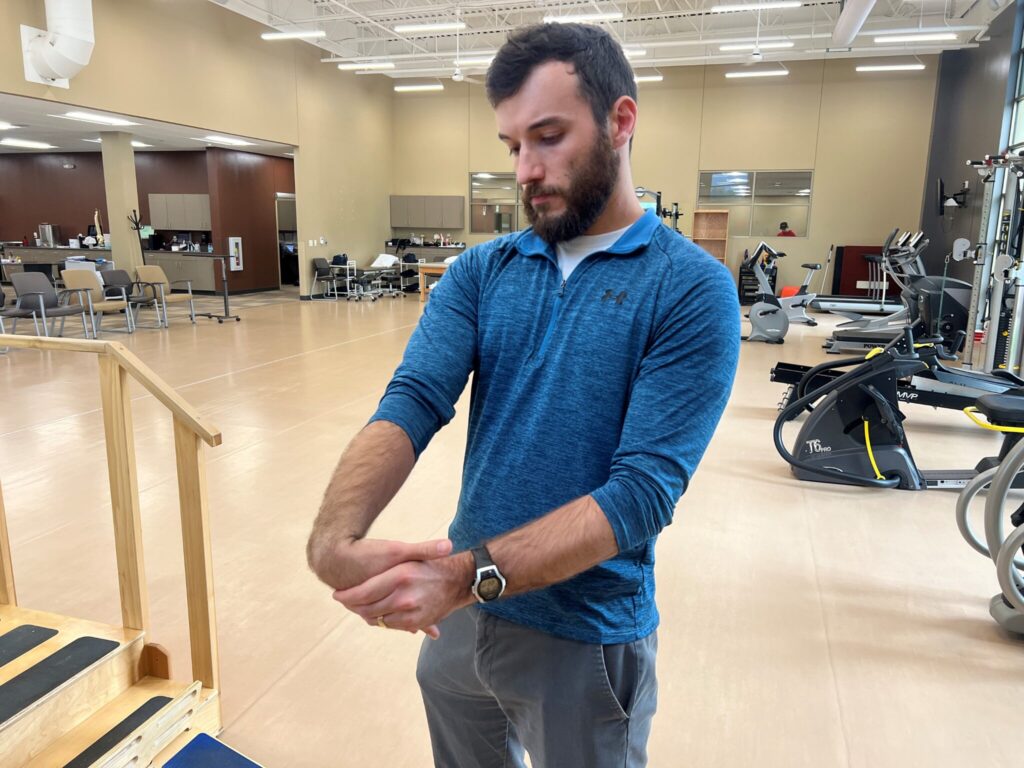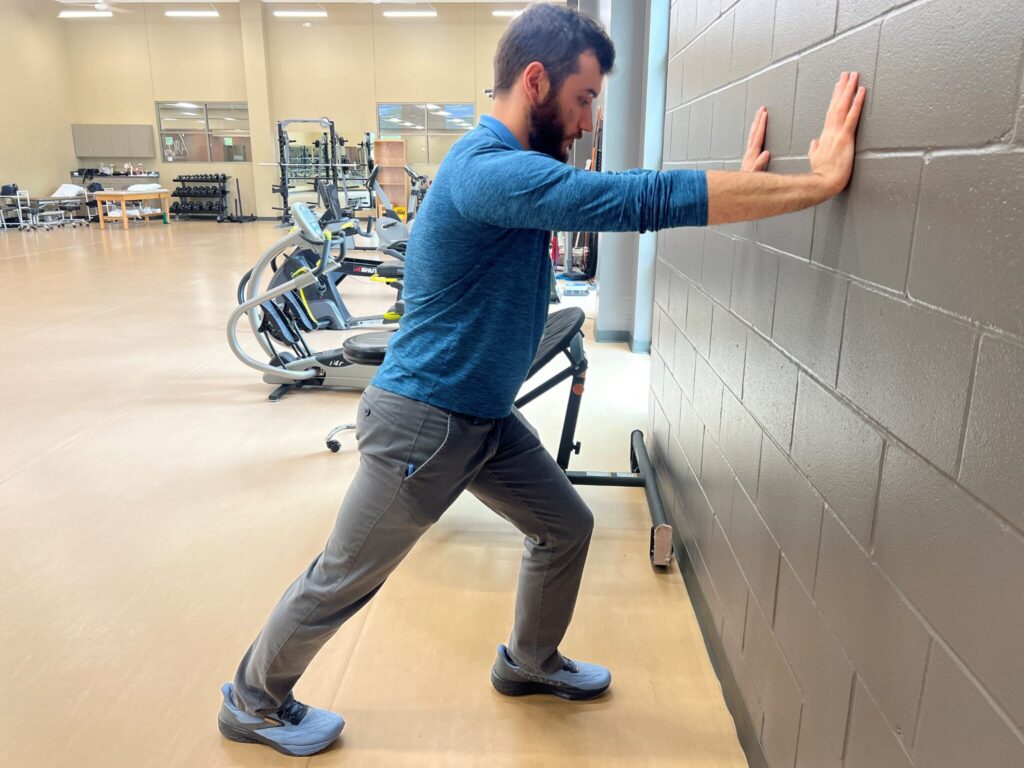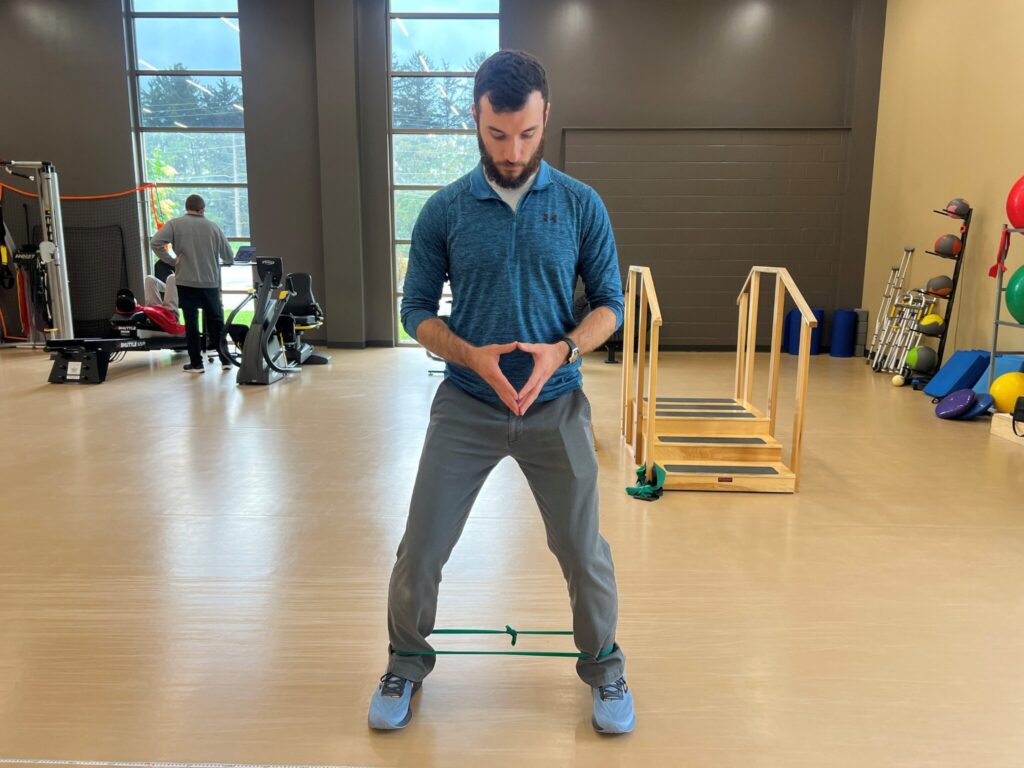Welcome to PT Peak Performance, a team blog of ORA physical and occupational therapists dedicated to our patients and friends who want to keep life in forward motion.
Meet ORA PT Scott Pries, a Clark College, Dubuque, IA, graduate.
I grew up near Joliet, Illinois, playing both football and volleyball. Even now, I still love to play volleyball, bike, kayak, and hike.
Ever since I was 15 years old, I wanted to be a PT. I’ve always loved the profession’s focus on improving the wellbeing of others by applying exercise, education, and skilled hands-on techniques.
As far as I’m concerned, “I have the best job in the world!”
Tennis-Related Injuries
Tennis is a sport that can be played at a variety of intensity levels, is very accessible, and a ton of fun. But it requires a good amount of agility, and it’s not uncommon to trip, stumble, or just lose control as you play.
The repetitive motion as you swing the racket while moving across the court also can easily result in arm and leg injuries.
ORA Physical Therapists treat many different types of tennis injuries. We see nagging elbow injuries such as tennis elbow as well as sprained ankles, injured Achilles tendons, and meniscus tears.
Losing your balance and falling can cause more severe injuries such as a broken wrist, fibular fractures, or shoulder fractures.

Scott Pries, ORA Physical Therapy
Scott’s Top Match-Winning Training Tips
Because tennis is so kinetic, focus on mobility and stability.
- Wrist extensors stretch to prevent tennis elbow – These stretch out the muscles commonly affected by tennis elbow. Keep your wrists stretched out to help reduce the likelihood of developing unwanted inflammation and pain.
- Calf stretches prevent Achilles tendon injuries – Almost everyone has tight calves, and in tennis, your calves should be as loose as possible. Stretching your calves reduces the chance of injuring your Achilles tendon, as well as painful muscle cramps.
- Hamstring stretches protect knees – Hamstrings tighten up when they are kept in a shortened position. Hamstrings attach to the back of the knee and directly connect to the meniscus. The meniscus is a c-shaped cartilage in the knee that acts like a shock absorber, so any increase in hamstring tension is transmitted directly back to the meniscus. Hamstring stretching will reduce the likelihood of developing a meniscal tear and make it easier to move around the tennis court.
- Band walks with resistance are the “super food” for your hips – This training technique is a personal favorite of mine. You know how some foods are “super foods” because they do everything for you nutritionally? Well, band walks are like a “super exercise” for a person’s hips – they give all the major muscle groups a great workout.
- The gold standard for ankles – Ankle dorsiflexion, plantarflexion, inversion, and eversion with resistance are the gold standards for ankle strengthening and stabilization. Ankles are built to move four directions, and this exercise strengthens the muscles that pull the ankle in all four of these directions. Keep these muscles strong to prevent spraining your ankle as you change directions to hit the perfect shot.
The wrist extensor stretch, hamstring stretch, and calf stretch should be held anywhere from 30 to 60 seconds at a time; research shows that any stretch held shorter than that is ineffective at producing long-term benefits, and a stretch held longer than 60 seconds does not yield much more of a benefit. Scott shares that while it won’t necessarily cause injury, there isn’t much more of an extra benefit to holding it past the 60-second mark.



Tennis injuries? Know when to see a doctor
Pain and injury are hard to evaluate. If you have the following symptoms or for an extended period of time, see a physician or visit one of ORA’s seven Urgent OrthoCARE centers for immediate attention.
- Feeling unstable or cannot bear weight on the affected limb.
- Bruising, swelling.
- Intense pain, or other symptoms that last for a long time.
- Even mild symptoms that last for a longer period may require a doctor to confirm that it’s not something that could progress to something more serious.
Visit our website for information on ORA PT’s Tennis and Raquet Sport Rehab program.
